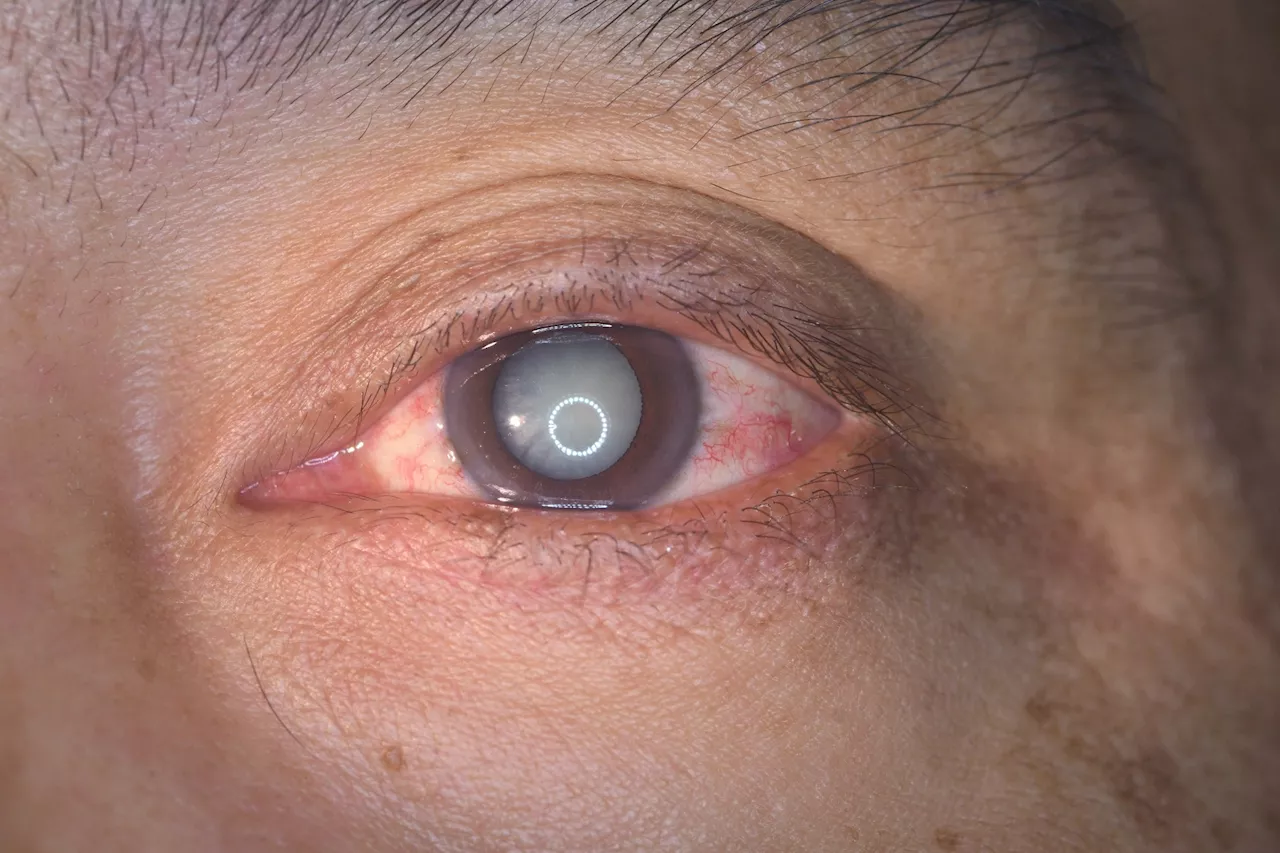Researchers have reviewed strategies to increase glutathione levels in the eye lens, focusing on endogenous molecular mechanisms to prevent cataracts by countering oxidative stress.
By Dr. Sanchari Sinha Dutta, Ph.D.Oct 3 2024 Harnessing the eye’s natural defenses, scientists explore innovative ways to boost antioxidants and reduce oxidative stress in the lens, offering new hope for cataract prevention and delayed surgery.
Cataract surgery is highly effective in treating the condition and restoring vision. It is the most commonly performed surgical procedure worldwide. However, such high demand often creates significant pressure on the healthcare system, resulting in lengthy waiting times for surgery. This highlights the need for developing alternative strategies to prevent or delay the onset of cataracts.
Three strategies that utilize the endogenous molecular machinery of the lens have shown promising results in terms of increasing glutathione levels in the lens and preventing cataracts. These strategies are based on leveraging existing molecular pathways, thereby avoiding some of the pitfalls of supplementing the lens with exogenous antioxidants, which have shown mixed results. In this review article, the authors have provided a detailed overview of these strategies.
Prevention strategies: Wearing UV-protective sunglasses can slow cataract development, complementing antioxidant treatments like those targeting Nrf2 pathways. In contrast, Nrf2 activators, such as sulforaphane, have been found to prevent homocysteine- or hydrogen peroxide-induced cataract formation in human lens epithelial cells by increasing nuclear translocation of Nrf2 and expressions of cellular antioxidants, including catalase, superoxide dismutase, glutathione peroxidase, and glutathione.
Antioxidant Blindness Cataract Cell Cysteine Diabetes Eye Genes Global Health Healthcare Homocysteine Hydrogen Peroxide Imaging Intracellular Knockout Membrane Oxidative Stress Stress Transcription Visual Impairment Vitrectomy
United Kingdom Latest News, United Kingdom Headlines
Similar News:You can also read news stories similar to this one that we have collected from other news sources.
 UCSF researchers move closer to predicting sudden infant death syndromeResearchers at UC San Francisco are getting closer to being able to predict sudden infant death syndrome, or SIDS.
UCSF researchers move closer to predicting sudden infant death syndromeResearchers at UC San Francisco are getting closer to being able to predict sudden infant death syndrome, or SIDS.
Read more »
 Researchers uncover mechanism fueling prostate cancerResearchers at the University of Michigan Health Rogel Cancer Center have uncovered a key reason why a typically normal protein goes awry and fuels cancer.
Researchers uncover mechanism fueling prostate cancerResearchers at the University of Michigan Health Rogel Cancer Center have uncovered a key reason why a typically normal protein goes awry and fuels cancer.
Read more »
 Are psi researchers more like lay believers or skeptics?A study shows that academics who work with psi differ from lay psi individuals, but not from skeptics, in actively open-minded thinking. Despite their firm belief in psi phenomena, psi researchers demonstrate a commitment to sound reasoning about evidence that is no different from that of skeptics.
Are psi researchers more like lay believers or skeptics?A study shows that academics who work with psi differ from lay psi individuals, but not from skeptics, in actively open-minded thinking. Despite their firm belief in psi phenomena, psi researchers demonstrate a commitment to sound reasoning about evidence that is no different from that of skeptics.
Read more »
 Researchers report encouraging first evidence of effective new gene therapy to treat multiple sulfatase deficiencyResearchers from Children's Hospital of Philadelphia (CHOP) have tested a preclinical model for an experimental gene therapy designed to treat multiple sulfatase deficiency (MSD), a disorder that affects the brain, lungs, skin, and skeleton with no currently approved treatments.
Researchers report encouraging first evidence of effective new gene therapy to treat multiple sulfatase deficiencyResearchers from Children's Hospital of Philadelphia (CHOP) have tested a preclinical model for an experimental gene therapy designed to treat multiple sulfatase deficiency (MSD), a disorder that affects the brain, lungs, skin, and skeleton with no currently approved treatments.
Read more »
 Q&A: Researchers discuss statin, metformin, and aspirin use with hepatocellular carcinomaErik Almazan, MD, of the Department of Medicine at Brigham and Women's Hospital and Raymond T. Chung, MD, of the Liver Center at Massachusetts General Hospital, are the authors of a paper titled 'Association of Statin, Metformin, and Aspirin Use with Hepatocellular Carcinoma in the All of Us Research Program, published in Gastro Hep Advances.
Q&A: Researchers discuss statin, metformin, and aspirin use with hepatocellular carcinomaErik Almazan, MD, of the Department of Medicine at Brigham and Women's Hospital and Raymond T. Chung, MD, of the Liver Center at Massachusetts General Hospital, are the authors of a paper titled 'Association of Statin, Metformin, and Aspirin Use with Hepatocellular Carcinoma in the All of Us Research Program, published in Gastro Hep Advances.
Read more »
 TAAR1 gene mutations may be a missing link in understanding neuropsychiatric disorders, researchers suggestIn the complex landscape of mental health research, a new viewpoint review sheds light on an underexplored genetic player: the trace amine-associated receptor 1 (TAAR1).
TAAR1 gene mutations may be a missing link in understanding neuropsychiatric disorders, researchers suggestIn the complex landscape of mental health research, a new viewpoint review sheds light on an underexplored genetic player: the trace amine-associated receptor 1 (TAAR1).
Read more »
